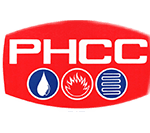Fire suppression systems require regular maintenance to ensure they are working appropriately in case of a fire. When sprinkler systems fail, it puts everything and everyone inside the building at risk. When the sprinklers are neglected, unnoticed damage can result in a failure. Most experts recommend inspecting fire suppression systems a minimum of four times each year.
The pipes supplying water to fire suppression systems often corrode when a water treatment isn’t used. Sprinklers are especially susceptible to microbiologically induced corrosion (MIC), which causes pinhole leaks, tuberculation, and a reduction of water flow in the fire suppression main.
Once corrosion begins, the pipes gradually develop holes and start to leak. If the fire sprinkler pumps happen to turn on, the resulting shock wave can dislodge the corrosion. The end result is a blocked sprinkler right when you really need it.
Businesses often rely on fire suppression systems and sprinklers to protect their facilities. All types of businesses, warehouses, and factories distribute sprinklers throughout the buildings for widespread safety against fire. No matter what material the pipes are made from, MIC is often a problem. It’s essential for any business with sprinklers to test their system and repair any issues with the pipes before a fire occurs.
Fire Sprinkler and Suppression Main Pipe Lining
Pipe lining is a modern solution that makes replacing and repairing a range of pipes easier, faster, and more cost-effective. The pipes used in fire suppression systems are often narrower than other pipes. Because of this, pipelining with epoxy effectively rehabilitates the pipe. Before applying epoxy, the pipelining company uses high pressure and high flow air to blow sand through the pipes. This works as an abrasive to remove the corrosion deposits.
Next, they blow a special epoxy liquid through the pipes to coat the entire interior of the pipe. They apply heat to cure it and then test to make sure the system is leak free.
Epoxy pipe restoration is a non-invasive process that prevents damage to the pipes. The epoxy is also resistant to corrosion, preventing problems from happening for years. The pipe lining process also extends the lifetime of existing fire suppression systems so you don’t have the expense of replacing them.
Fire suppression systems are one of the most important safety features you have for your business and everyone who works for you. Contact San Diego Plumbing and Pipelining today to learn how you can protect your sprinkler system with an epoxy pipe liner.
Call Today (855) ANY-PIPE or (855) 269-7473









